Understanding Profit and Loss Statements: An Actionable Guide
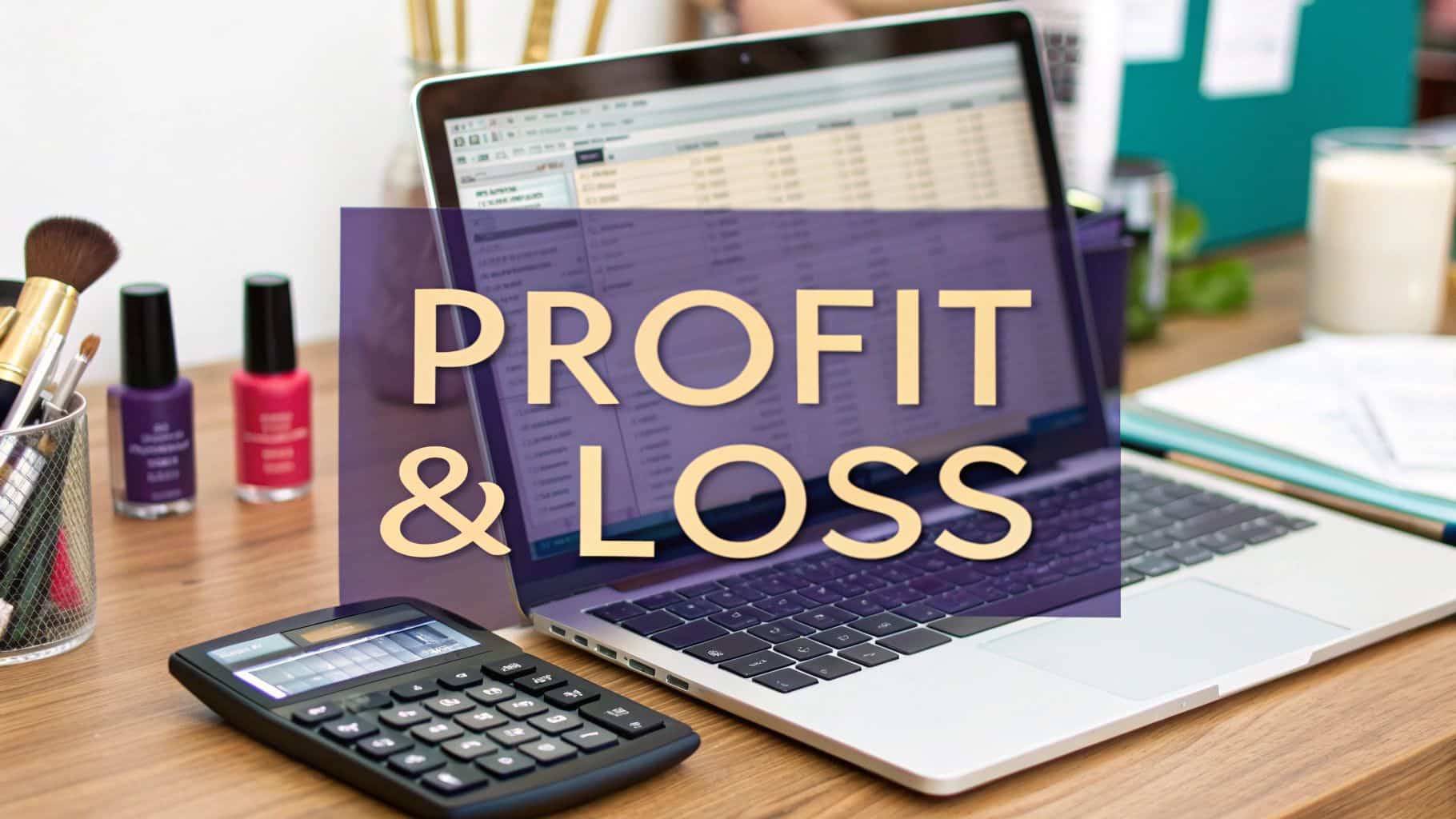
Think of a Profit and Loss statement as your business's financial report card. It's not just a spreadsheet of numbers; it’s a straightforward story that shows your revenues, costs, and expenses over a certain period. The final number reveals the big secret: your net profit or loss. This guide will give you actionable insights to not just read your P&L, but use it to make smarter business decisions.
Your Business Story Told by the Profit and Loss Statement
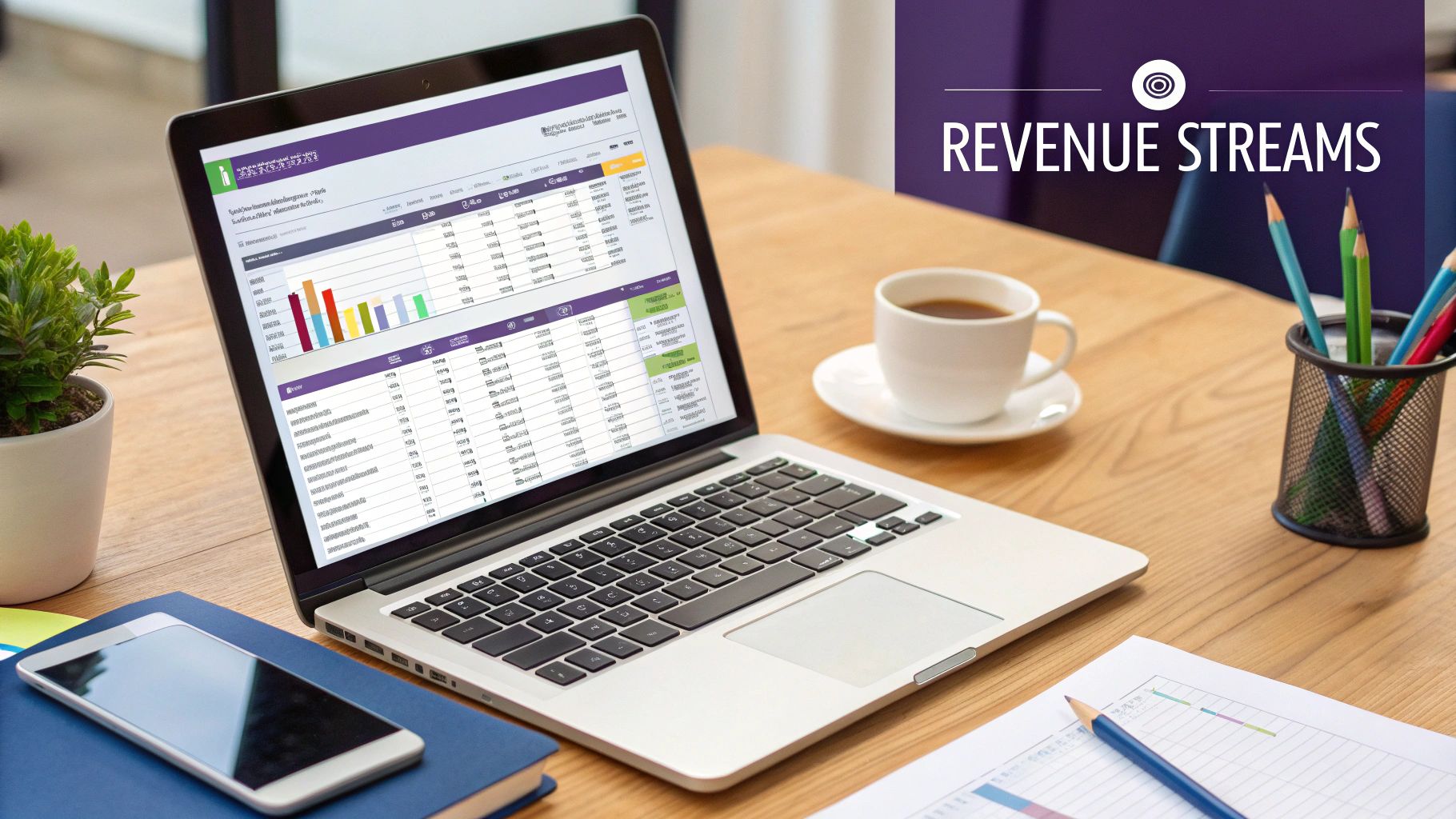
Let's be real—most beauty business owners see financial documents and feel intimidated. But the Profit and Loss (P&L) statement is one of your most powerful tools for growth. It gives you a clear snapshot of your salon or spa's financial health over a specific time, whether that's a month, a quarter, or a whole year.
At its core, it answers the one question that keeps every owner up at night: "Is my business actually making money?"
Unlike complicated financial charts, the P&L follows a simple formula. It starts with your total revenue, subtracts the direct costs of your services or products, and then takes out all your other operational expenses. The number you're left with tells you if you were profitable. Plain and simple.
Why Your P&L Is a Total Game-Changer
Getting comfortable with your P&L is the difference between making smart, proactive decisions and just guessing. A solid P&L helps you take immediate, practical action:
- Track Your Performance: See if your revenue is actually growing and if your expenses are staying in check. Actionable Insight: Set a monthly calendar reminder to review your P&L. If revenue is flat for two months in a row, it's a signal to launch a new promotion.
- Spot Important Trends: Notice patterns over a few months to understand the natural rhythm of your business. Actionable Insight: If you see a consistent dip in sales every August, plan a "Back to School" special next year to counteract it.
- Secure Funding: If you ever need a loan or want an investor, they will absolutely ask to see your P&L. It’s non-negotiable. Actionable Insight: Keep your P&L updated monthly so you are always ready for an opportunity.
Take a page from the big players. Amazon's journey from a $596 million net profit in 2015 to a whopping $3.0 billion by 2017 wasn't just about selling more stuff. Their P&L statements told a story of mastering their costs across fulfillment, marketing, and tech. That’s a lesson every single business, no matter the size, can learn from.
A P&L statement translates every client served, every product sold, and every bill paid into a clear financial narrative. It’s your roadmap to sustainable growth.
Building this financial narrative starts with a good plan. For instance, a practical guide to small business budgeting can lay the groundwork for managing the income and expenses that will eventually tell your story on the P&L statement.
Decoding the Key Components of Your P&L
Think of your profit and loss statement like a recipe. Each component is an ingredient, and when you follow the steps from top to bottom, you get a clear picture of your beauty business's financial health. It’s a logical flow, not just a jumble of random numbers.
Your P&L always starts with your total earnings before anything gets taken out. From there, it subtracts different types of costs in stages, revealing different levels of profitability along the way. It’s like peeling back the layers of an onion to see what’s really going on inside your business.
The Journey from Revenue to Profit
Every P&L statement follows the same standard path. It all begins with your Revenue (or Sales), which is the total amount of money your beauty business brought in during a specific period. This is your starting point—the gross income from every service and product you sold.
Next, you subtract the Cost of Goods Sold (COGS). For a salon, this is the direct cost of what you used to perform a service. Think of the price of the hair color used for a client or the wax for a treatment. If you’re selling retail products, your COGS is simply what you paid for those items.
What’s left after you subtract COGS from your Revenue is your Gross Profit. This number is a big deal. It shows you exactly how profitable your core services and products are before you even think about your general operating costs.
A healthy Gross Profit is the foundation of a sustainable business. It tells you if your pricing and direct costs are properly aligned to make money from every single sale or appointment.
After you've got your Gross Profit, the next step is to subtract your Operating Expenses (often called OpEx). These are all the costs required just to keep your doors open, but they aren't directly tied to one specific service. This bucket includes expenses like:
- Rent for your salon or studio space.
- Salaries and wages for your receptionists, assistants, and other non-service staff.
- Marketing and advertising costs to bring in those lovely new clients.
- Utilities like electricity, water, and Wi-Fi.
- Insurance and any professional licensing fees.
This handy visual breaks down how your revenue flows all the way down to your net profit.
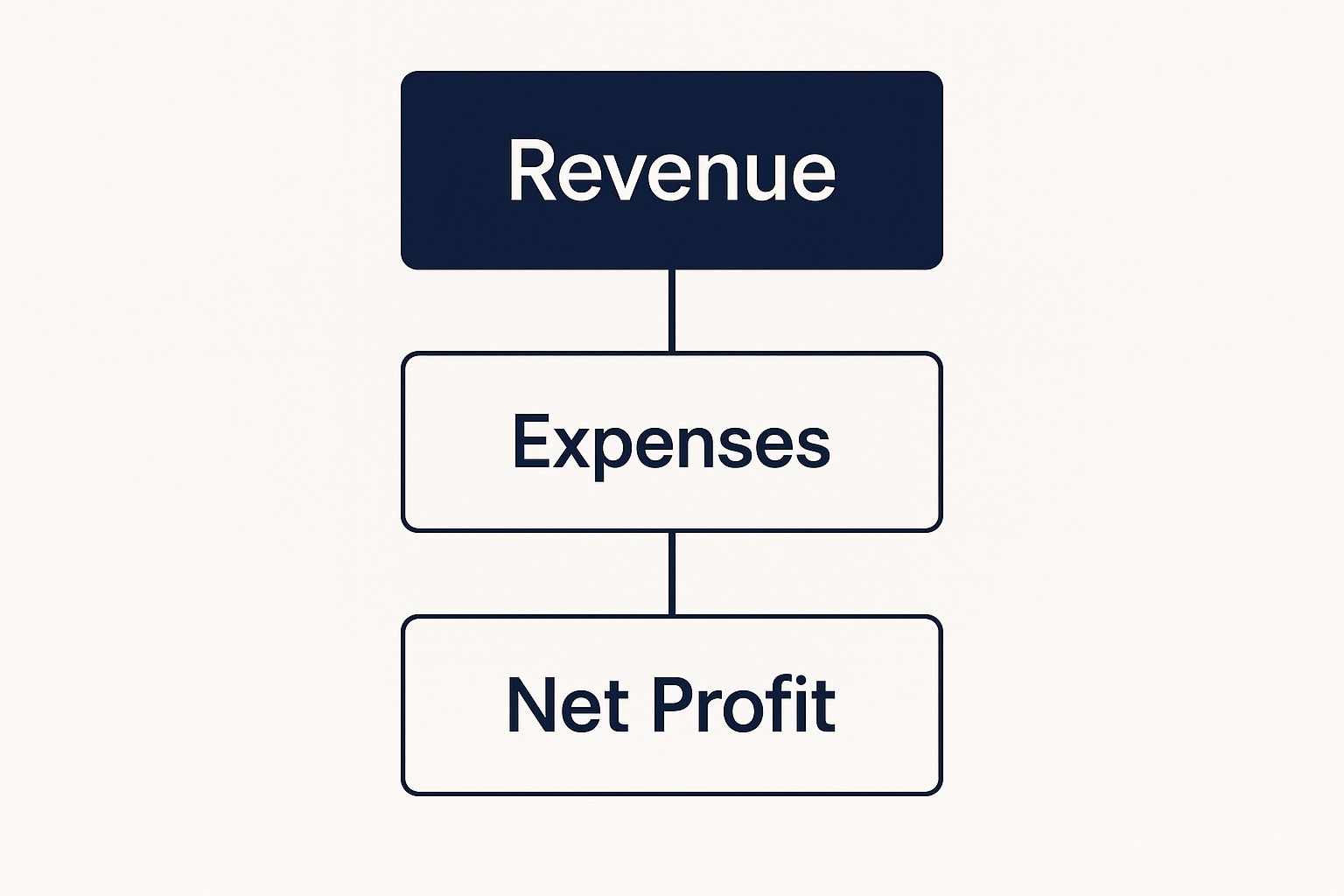
As you can see, all your expenses are peeled away from your total revenue to show what’s really left at the end of the day.
Arriving at Your Bottom Line
Once you've subtracted all your Operating Expenses from your Gross Profit, you're left with your Operating Income. This figure is a fantastic indicator of your business's day-to-day efficiency. It shows you the profit generated from your main business activities alone.
Finally, you make the last few tweaks for any non-operating items, like interest earned from a business savings account or interest paid on a loan. After accounting for taxes, you arrive at the final, most important number: Net Income. This is your true "bottom line"—the actual profit your business has pocketed.
The P&L's structure has been perfected over the years to give a super clear view of a company's performance. Financial analysts and investors dig into historical P&L data to build forecasts and compare key metrics, like gross profit margins, over different time periods. You can learn more about how the pros access and use historical company data on Daloopa.com to get these kinds of insights.
How to Read and Analyze Your P&L Statement
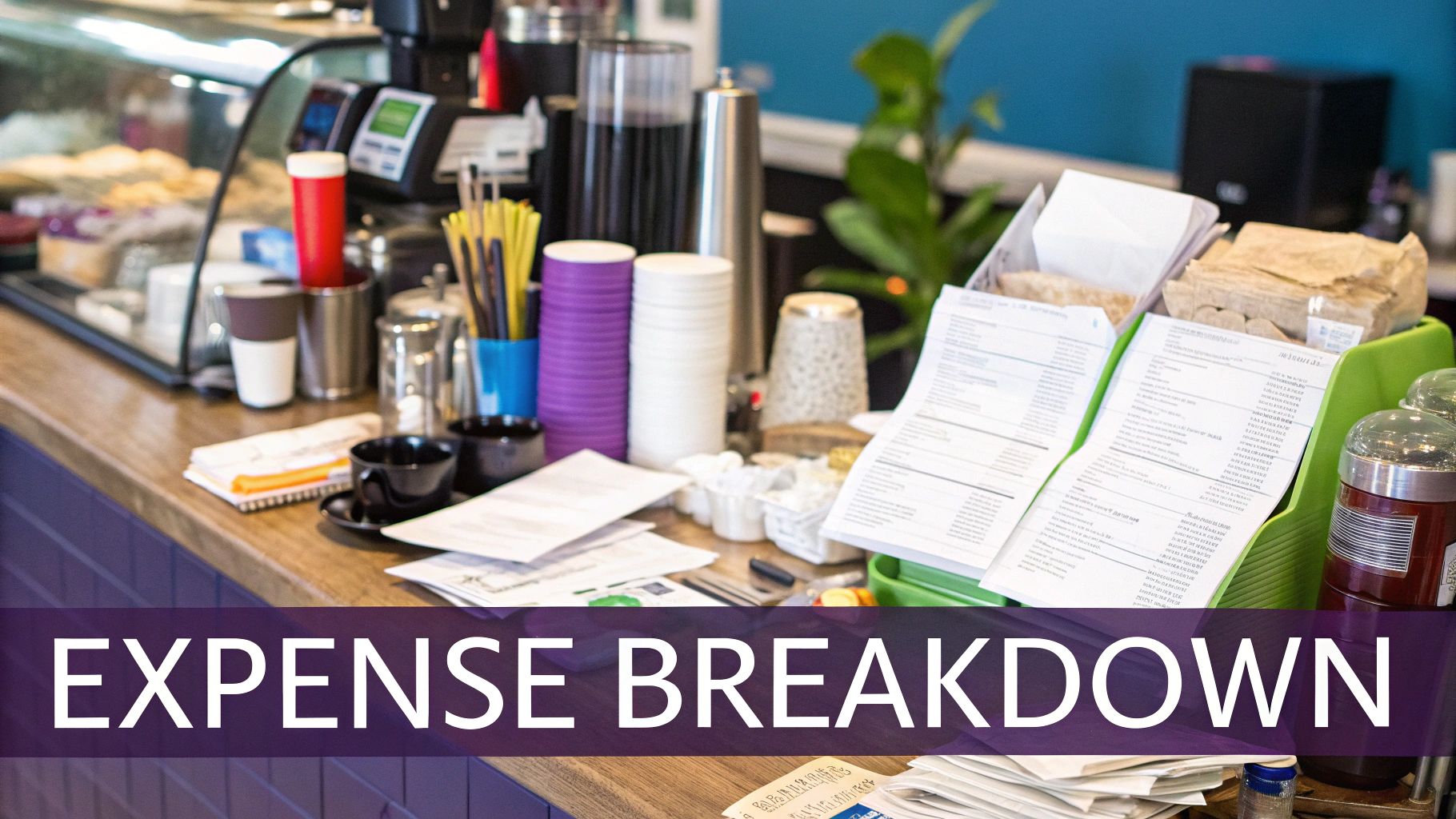
Okay, you have the pieces of the P&L puzzle. Now it's time to put them together to see the bigger picture and take action. Reading a P&L isn’t about staring at numbers; it's about understanding the story they tell so you can make strategic moves.
Think of yourself as a financial detective for your salon. You're hunting for clues that show what's working and what needs improvement. Two of the best tools for this are vertical analysis and horizontal analysis. Let's break down how to use them.
Vertical Analysis: What the Percentages Reveal
Vertical analysis is a simple technique for seeing exactly where every dollar you earn is going. You take each line item on your P&L and calculate it as a percentage of your total revenue for that period. This immediately shows you what your biggest expenses are relative to your income.
The formula is straightforward: (Line Item Amount / Total Revenue) x 100 = Percentage.
For example, if your Cost of Goods Sold (COGS) for the month was $3,000 and your total revenue was $10,000, your COGS would be 30% of your revenue. This single number tells you how much it costs to deliver your services and sell your products. To see how your numbers stack up, check our guide on average profit margins for beauty salons.
Actionable Insight: Calculate these percentages every month. If you see your rent percentage creeping up, it’s a sign your sales aren’t growing fast enough to support your overhead, signaling a need for a marketing push.
Horizontal Analysis: Spotting Trends Over Time
While vertical analysis gives you a snapshot, horizontal analysis turns that snapshot into a movie. This is where you compare your P&L statements from different periods side-by-side—this month versus last month, or this quarter versus the same quarter last year. This is how you spot trends and plan ahead.
Lining up your reports lets you ask practical questions and get clear answers:
- Is your revenue consistently growing? A steady upward trend is a sign of a healthy business. If not, it's time to review your marketing or client retention strategy.
- Are your operating expenses climbing faster than your sales? This is a red flag that your overhead is getting out of control. Actionable Insight: If your utility bill jumped 20% but sales only grew 5%, investigate why. Was it a rate hike, or can you implement energy-saving measures?
- Did your net profit take a dip last quarter? Comparing P&Ls helps you pinpoint exactly which expense category was the culprit and address it directly.
This trend analysis is vital for planning your next move. It shows you’re not just running a business—you’re managing it with purpose.
P&L Analysis Methods Compared
To put it all together, here’s a quick look at how these two analysis methods help you make decisions.
| Analysis Method | Purpose | Actionable Question It Answers |
|---|---|---|
| Vertical Analysis | To understand the cost structure and profitability within a single period. | "What percentage of my monthly revenue is being spent on product costs? Is it too high?" |
| Horizontal Analysis | To track financial performance and spot trends over multiple periods. | "Did my marketing expenses increase from Q1 to Q2, and did revenue grow with it? Was it a good investment?" |
Both methods are powerful on their own, but using them together is how you truly master understanding profit and loss statements. They give you the clarity needed to stop guessing and start making strategic decisions that drive real growth for your beauty business.
Turning P&L Insights Into Business Strategy
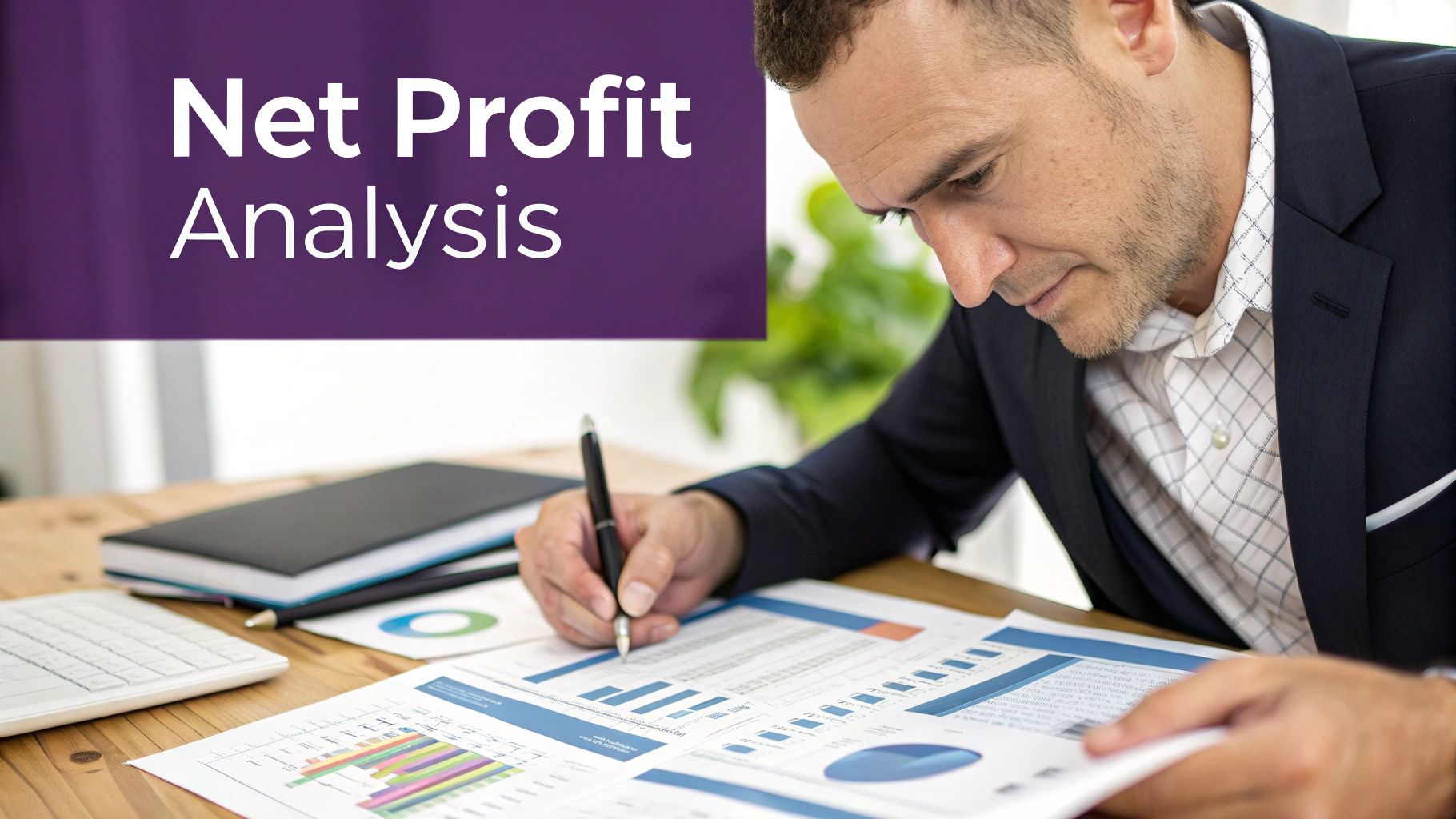
Alright, you’ve analyzed your P&L statement. Now it’s time to use those insights to create a concrete action plan. This is where you turn numbers on a page into strategies that boost your bottom line. Your P&L is a map—use it to navigate toward higher profits.
Your P&L reveals what’s working wonders and what’s quietly draining your bank account. By turning those numbers into a to-do list, you become the architect of your business’s future, not just a passive observer.
Optimize Pricing and Control Costs
One of the first places to look is your Gross Profit Margin. If that percentage is shrinking month after month, it’s a clear signal that the cost of your products and services is rising faster than your prices. Here are a few powerful moves you can make right now:
- Talk to Your Suppliers: Pull up your last six months of invoices and call your main supplier. Ask them if you qualify for a bulk discount or better payment terms. A 5% discount on your biggest product line can significantly boost your gross profit.
- Adjust Your Service Prices: A shrinking margin is often the clearest sign that it’s time for a price increase. Actionable Insight: Instead of a scary across-the-board hike, consider adding $5 to your top three most popular services. The impact on your revenue will be immediate.
- Analyze Your Service Menu: Run a report to identify your most and least profitable services. Actionable Insight: Create a special promotion this month that bundles a high-profit service (like a deep conditioning treatment) with a more common one (like a haircut).
Your P&L doesn't just show you if you made money; it shows you how you made it. Get into the details to tune up your operations for maximum profit.
These insights are also gold for smart financial planning. It’s not just about your salon, either—knowing how to use financial data to measure performance, like calculating a rental property's Return on Investment (ROI), is a key skill for making strategic decisions in any business.
Re-Evaluate Your Operational Spending
Next, scroll down to your Operating Expenses. This section shows what it costs to simply keep the lights on. A common trap is seeing marketing expenses creep up without a matching jump in sales. If you spot that trend, it’s time to take action:
- Track Your Marketing ROI: For one month, ask every new client how they heard about you. Compare that data to your marketing expenses on the P&L. If your pricey magazine ad brought in one client but your free Instagram profile brought in ten, you know exactly where to focus your energy and budget next month.
- Review Your Subscriptions: Print out your bank statement and highlight every recurring software fee. Go through them one by one. Are you still using that scheduling app you signed up for six months ago? If not, cancel it today.
- Optimize Your Day-to-Day: Look at your utility bill on your P&L. If it seems high, implement an "end of day" checklist for your staff that includes turning off all non-essential electronics and lights. Small changes add up.
Getting a handle on these costs is directly tied to your salon’s long-term health. Good spending habits also make your day-to-day finances easier to handle, a skill we dive into in our guide to cash flow management for small business. When you turn P&L insights into a to-do list, you build a stronger business.
Common P&L Mistakes That Can Trip You Up
Even when you feel you have a handle on your P&L, it's easy to misread the signs. A few common mistakes can lead you to make the wrong decisions. By learning to spot these pitfalls, you can ensure you're getting the real story about your business's financial health.
One of the biggest mistakes is confusing profit with cash flow. Your P&L might show a healthy net income, making you think you're flush with cash. But profit and cash are two different things.
Your P&L records revenue when you earn it, not when the money hits your bank. Say you invoiced a large bridal party at the end of May, but they haven't paid yet. Your P&L looks great, but your bank account is still waiting. A profitable business can fail if it runs out of cash to pay its own bills.
Forgetting About Non-Cash Expenses
Another common oversight is forgetting about non-cash expenses, with depreciation being the prime example. Depreciation is an accounting method for spreading out the cost of a large purchase—like new salon chairs or equipment—over its useful life.
While it lowers your taxable income and net profit on the P&L, no actual cash leaves your business each month for it. Ignoring this can warp your perception of profitability, while understanding it gives you a truer sense of your actual earnings.
Don't let your P&L live in a vacuum. A single report is just a snapshot; its real power comes from putting it in context and comparing it over time.
Looking at Your P&L in a Bubble
Finally, many business owners look at their P&L in isolation. Without context, the numbers don't mean much. To make your P&L a truly powerful tool, you must use it for comparison. This comes down to two key actions:
- Internal Benchmarking: Get in the habit of comparing your current P&L to previous ones (last month, last quarter, this time last year). This is the only way you'll spot important trends, like creeping expenses or a slowdown in revenue that you need to address immediately.
- External Benchmarking: See how your numbers stack up against industry averages. Are your product costs (COGS) way higher than the typical salon? Knowing this can signal it's time to renegotiate with suppliers or rethink your pricing strategy. For a deeper dive, check out our guide on how to price nail services to ensure you're maximizing every dollar.
Dodging these common mistakes transforms your P&L from a boring accounting document into a dynamic roadmap for your business. It sharpens your financial instincts and empowers you to make smart, data-driven decisions that will help your business grow.
Your Top P&L Questions, Answered
As you start getting hands-on with your business's financials, questions will come up. That’s a great sign—it means you’re moving beyond just glancing at your P&L and are starting to truly understand it. Here are some of the most common questions from beauty business owners.
How Often Should I Be Looking at My P&L?
The best practice is to review your P&L every single month. Think of it as a mandatory monthly check-up for your business. This consistency allows you to spot small issues before they become major problems.
Waiting until the end of the quarter or year is too late to make meaningful adjustments. A monthly review is an actionable habit that helps you:
- Catch trends early: Are product costs creeping up? Did a recent promotion actually work? You’ll know right away and can act on it.
- Stay agile: Make smart, fast decisions based on current data, not old news.
- Keep your books clean: It’s far easier to categorize 30 days of transactions than to sort out a whole year of financial chaos.
Actionable Step: Block out one hour on the 5th of every month in your calendar. Title it "P&L Review & Action Plan." Use this time to not just look at the numbers, but to decide on one action you'll take based on what you see.
What’s the Difference Between a P&L and a Balance Sheet?
This is a great question. Here’s the simplest way to remember the difference:
Your Profit and Loss statement is like a movie—it tells the story of your financial performance over a period of time (e.g., one month). Your Balance Sheet is like a photograph—it captures your financial position at one specific moment in time (e.g., as of December 31st).
Let’s break it down further:
| Financial Statement | What It Shows You | The Actionable Question It Answers |
|---|---|---|
| Profit & Loss | Your income, your expenses, and your profit (or loss). | "Was my business profitable last month, and where can I cut costs?" |
| Balance Sheet | Your assets (what you own), liabilities (what you owe), and equity. | "What is my business's total net worth right now, and do I have enough assets to cover my debts?" |
The P&L is about profitability. The Balance Sheet is about financial stability. You need both to get a complete picture, as they tell two different but equally important parts of your business's story.
Can I Just Make My Own P&L, or Do I Really Need an Accountant?
You can absolutely create your own P&L statement. Modern accounting software like QuickBooks or Xero makes it incredibly straightforward. As long as you consistently categorize your income and expenses, the software can generate a P&L for you in a few clicks. This is the perfect place to start for any hands-on business owner.
However, as your business grows or when facing a big decision (like applying for a loan or hiring a new employee), consulting a professional is a smart investment. An accountant does more than just crunch numbers—they provide strategic advice, ensure compliance, and help you legally minimize your tax burden.
For most small businesses, a hybrid approach works best: use software for your monthly tracking and reviews, but hire an accountant for year-end taxes and strategic planning sessions. This gives you both day-to-day control and expert guidance when you need it most.
Ready to attract more clients and grow your beauty business? At gohappybeauty, we build stunning, SEO-optimized websites designed specifically for artists like you. Stop blending in and start standing out online. Get your beautiful, client-attracting website today!
Grow your beauty business
Our focus is, and always will be, helping you improve your online presence and generate more business from your website. That is what we do, for you.

